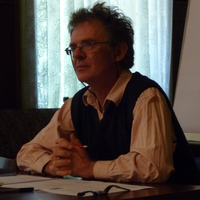Papers by Timothy Neff

The International Journal of Press/Politics, 2018
This article analyzes the extent to which diverse institutional logics (stock market, privately h... more This article analyzes the extent to which diverse institutional logics (stock market, privately held, civil society, public) are linked to the exercise of one important mode of media ownership power: public service orientation. The research draws on a content analysis of a total of fifty-one news organizations in Sweden, France, and the United States, representing, respectively, Hallin and Mancini’s democratic corporatist, polarized pluralist, and liberal models. We find that two types of institutional logics—affordance and homogenization—shape the amount and type of public-service-oriented news. On average, public-service-oriented news was highest at civil-society-owned media, but there was significant variation within this category: We call this kind of institutional logic an affordance logic because it affords but does not guarantee a certain kind of news content. Public media, on the other hand, exhibited the least deviation across outlets within each country, thus exemplifying ...
We review 100 articles published from 2000 to early 2020 that research aspects of vaccine hesitan... more We review 100 articles published from 2000 to early 2020 that research aspects of vaccine hesitancy in online communication spaces and identify several gaps in the literature prior to the COVID-19 pandemic. These gaps relate to five areas: disciplinary focus; specific vaccine, condition, or disease focus; stakeholders and implications; research methodology; and geographical coverage. Our findings show that we entered the global pandemic vaccination effort without a thorough understanding of how levels of confidence and hesitancy might differ across conditions and vaccines, geographical areas, and platforms, or how they might change over time. In addition, little was known about the role of platforms, platforms' politics, and specific sociotechnical affordances in the spread of vaccine hesitancy and the associated issue of misinformation online.

In this study, we explore two parallel networks of discourse during the United Nations Framework ... more In this study, we explore two parallel networks of discourse during the United Nations Framework Convention on Climate Change (UNFCCC) negotiations of 2019 in Madrid (25th Conference of the Parties, COP25): one produced by news media coverage of the talks; the other by Twitter users who shared news content about the talks. Findings show that transnational public spheres can emerge out of relatively homogeneous moments internal to networks and external to networks (i.e. across multiple networks) at the intersection of certain actors and topics, cultural practices, and commercial and non-commercial (state) institutions. Yet there are persistent divisions along language, geographic, and other lines that encourage the formation of distinct micro-spheres of networked actors (internal heterogeneity), as well as distinct media practices that work to differentiate mass media networks from networks produced by a different set of publics on social media (external heterogeneity).

Vaccine hesitancy in online spaces: A scoping review of the research literature, 2000-2020
Harvard Kennedy School Misinformation Review
We review 100 articles published from 2000 to early 2020 that research aspects of vaccine hesitan... more We review 100 articles published from 2000 to early 2020 that research aspects of vaccine hesitancy in online communication spaces and identify several gaps in the literature prior to the COVID-19 pandemic. These gaps relate to five areas: disciplinary focus; specific vaccine, condition, or disease focus; stakeholders and implications; research methodology; and geographical coverage. Our findings show that we entered the global pandemic vaccination effort without a thorough understanding of how levels of confidence and hesitancy might differ across conditions and vaccines, geographical areas, and platforms, or how they might change over time. In addition, little was known about the role of platforms, platforms’ politics, and specific sociotechnical affordances in the spread of vaccine hesitancy and the associated issue of misinformation online.

International Journal of Press/Politics , 2018
This article analyzes the extent to which diverse institutional logics (stock market, privately h... more This article analyzes the extent to which diverse institutional logics (stock market, privately held, civil society, public) are linked to the exercise of one important mode of media ownership power: public service orientation. The research draws on a content analysis of a total of fifty-one news organizations in Sweden, France, and the United States, representing, respectively, Hallin and Mancini's democratic corporatist, polarized pluralist, and liberal models. We find that two types of institutional logics—affordance and homogenization—shape the amount and type of public-service-oriented news. On average, public-service-oriented news was highest at civil-society-owned media, but there was significant variation within this category: We call this kind of institutional logic an affordance logic because it affords but does not guarantee a certain kind of news content. Public media, on the other hand, exhibited the least deviation across outlets within each country, thus exemplifying a strong homogenization logic. All forms of ownership, but especially privately held and civil society media, exhibited significant variations across individual organizations. Economic field dominance, as in the United States, did not produce greater homogenization across ownership fields as predicted by field theory.
Public media's contributions to democracy are well established. Less widely known are the specifi... more Public media's contributions to democracy are well established. Less widely known are the specific policies that make these contributions possible. This study finds that professional autonomy and civic accountability in public media are supported by (1) funding established for multiyear periods; (2) legal charters that restrict partisan government influence while also mandating the provision of diverse, high-quality programming; (3) oversight agencies, whose " arm's length " independence from the government in power is bolstered through staggered terms and the dispersal of authority to make appointments; and (4) audience councils and surveys designed to strengthen links to diverse publics. Public media governed by policies that continue and extend, rather than depart from, these best practices will likely be the most successful in maintaining their civic mission online.
Op-eds and Magazine Articles by Timothy Neff
Despite the popular assumption that democracy requires a free and functional press, Americans har... more Despite the popular assumption that democracy requires a free and functional press, Americans harbor a surprising recalcitrance toward public subsidies for journalism. Many believe that if the market doesn’t support a news outlet—or if it doesn’t receive a wealthy benefactor’s support—then it deserves to wither.
Yet, as local commercial journalism continues to collapse and misinformation and extremism continue to rise, this inaction toward market failure deserves scrutiny. Why does the federal government underfund public alternatives to broken commercial models? What are the implications of this decades-long under-valuing of public media’s well-known civic benefits, which are enjoyed by the world’s strongest democracies?
Books by Timothy Neff











Uploads
Papers by Timothy Neff
Op-eds and Magazine Articles by Timothy Neff
Yet, as local commercial journalism continues to collapse and misinformation and extremism continue to rise, this inaction toward market failure deserves scrutiny. Why does the federal government underfund public alternatives to broken commercial models? What are the implications of this decades-long under-valuing of public media’s well-known civic benefits, which are enjoyed by the world’s strongest democracies?
Books by Timothy Neff
Yet, as local commercial journalism continues to collapse and misinformation and extremism continue to rise, this inaction toward market failure deserves scrutiny. Why does the federal government underfund public alternatives to broken commercial models? What are the implications of this decades-long under-valuing of public media’s well-known civic benefits, which are enjoyed by the world’s strongest democracies?